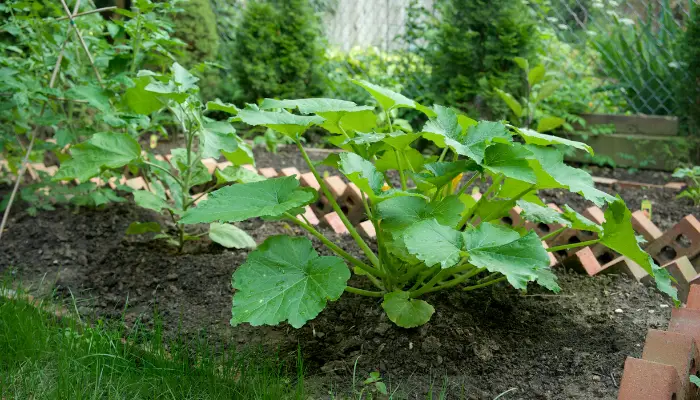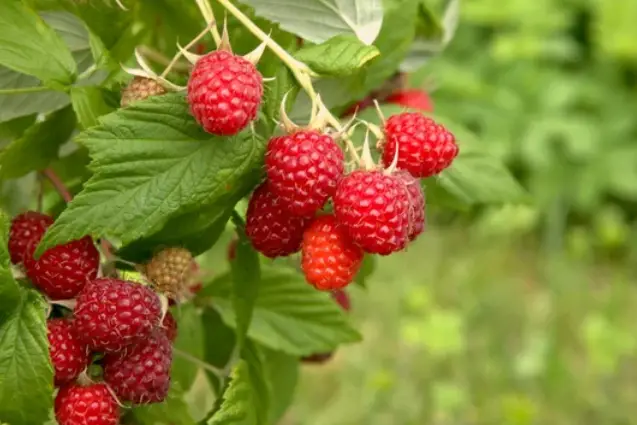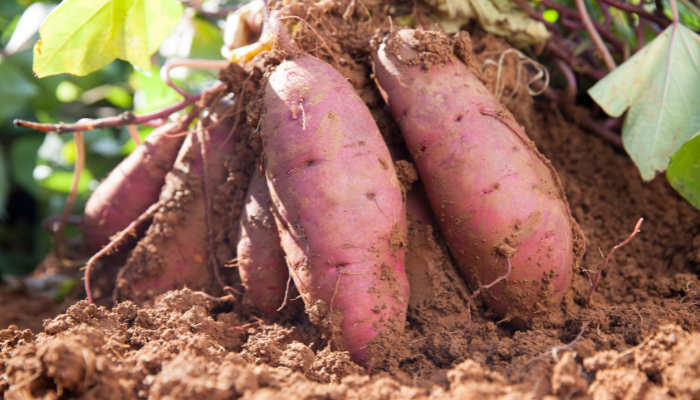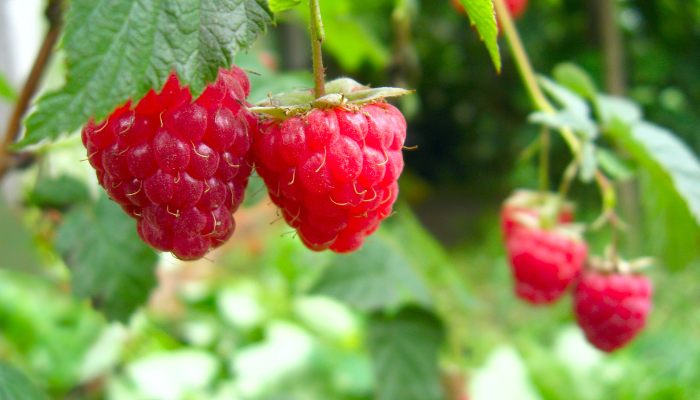White Beans with Black Spots: Causes and Solutions
White beans with black spots are a common sight in many households.
These spots can be a cause for concern for some, but they are actually a natural occurrence and do not indicate any serious health risks.
The spots are caused by a fungus called Ascochyta phaseolorum, which is harmless to humans.
White beans are a type of legume that are high in protein, fiber, and other essential nutrients.
They are a popular ingredient in many dishes, including soups, stews, and salads.
However, when white beans are left to dry on the vine, they are susceptible to fungal infections, which can cause black spots to appear on the surface.
While the appearance of black spots on white beans may be unappetizing to some, they are perfectly safe to eat.
In fact, many people actually prefer the taste and texture of beans that have been allowed to dry on the vine, as they tend to be firmer and more flavorful than their canned counterparts.
So, the next time you come across white beans with black spots, don’t be alarmed – they are simply a natural part of the drying process and are perfectly safe to consume.

Identification of White Beans with Black Spots
White beans with black spots can be caused by a variety of factors, including fungal or bacterial infections, insect damage, or genetic traits.
The appearance of the spots can vary based on the cause, but they are typically small and dark in color.
One common cause of black spots on white beans is the fungal disease anthracnose.
This disease causes small, sunken lesions to form on the bean pods, which can then spread to the beans themselves.
The lesions may be surrounded by a yellow halo and can cause the beans to become discolored and shriveled.
Anthracnose is most common in warm, wet conditions and can be prevented by practicing good crop rotation and maintaining proper plant hygiene.
Another fungal disease that can cause black spots on white beans is white mold.
This disease can cause a white, cottony growth to form on the bean pods, which can then turn gray and become dotted with small, hard black bodies called sclerotia.
Infected beans may stick together and become discolored and shriveled.
White mold is favored by high humidity and can be prevented by maintaining good air circulation and avoiding planting beans in areas with a history of the disease.
In addition to fungal diseases, black spots on white beans can also be caused by bacterial infections such as bacterial brown spot.
This disease causes small, water-soaked spots to form on the leaves, which can then develop into distinctive necrotic brown spots with a narrow, diffuse yellow margin.
The lesions may enlarge, coalesce, and fall out, giving the leaves a tattered appearance.
Bacterial brown spot can be prevented by avoiding overhead irrigation and maintaining good plant hygiene.
Finally, genetic traits can also cause white beans to have black spots.
For example, some varieties of black-eyed peas have a large black spot around the hilum, while heirloom varieties can be found with different colored spots from red to pink to green.
While genetic traits cannot be prevented, they can be controlled by selecting disease-resistant varieties and maintaining proper plant hygiene.
In conclusion, black spots on white beans can be caused by a variety of factors, including fungal or bacterial infections, insect damage, or genetic traits. Proper identification of the cause is important for effective prevention and control measures.
Culinary Uses of White Beans with Black Spots

White beans with black spots are a common sight in dried beans.
These spots are not harmful and can be removed by washing the beans before cooking.
In fact, white beans with black spots are often preferred by some cooks because they have a richer flavor and creamier texture than beans without spots.
Main Dishes
White beans with black spots are a versatile ingredient that can be used in a variety of main dishes. Here are a few ideas:
- White Bean and Sausage Stew: This hearty stew is perfect for a cold winter day. Combine white beans with black spots, sliced sausage, diced tomatoes, and chicken broth in a pot. Simmer until the beans are tender and the flavors have melded together.
- White Bean Chili: This vegetarian chili is packed with protein and flavor. Combine white beans with black spots, diced tomatoes, vegetable broth, chili powder, cumin, and garlic in a pot. Simmer until the beans are tender and the chili is thick and hearty.
- White Bean and Ham Soup: This classic soup is a great way to use up leftover ham. Combine white beans with black spots, diced ham, diced carrots, diced celery, and chicken broth in a pot. Simmer until the beans are tender and the soup is thick and flavorful.
Side Dishes
White beans with black spots can also be used in a variety of side dishes. Here are a few ideas:
- White Bean Salad: Combine white beans with black spots, diced red onion, diced cucumber, diced bell pepper, and a simple vinaigrette for a refreshing and healthy side dish.
- White Bean Hummus: This twist on traditional hummus is packed with protein and flavor. Combine white beans with black spots, tahini, lemon juice, garlic, and olive oil in a food processor. Serve with pita chips or fresh vegetables.
- White Bean and Kale Casserole: This vegetarian casserole is a great way to get your greens and protein in one dish. Combine white beans with black spots, chopped kale, diced tomatoes, garlic, and vegetable broth in a casserole dish. Top with breadcrumbs and bake until golden and crispy.
Overall, white beans with black spots are a delicious and nutritious ingredient that can be used in a variety of dishes. Whether you’re making a hearty stew or a refreshing salad, these beans are sure to add flavor and texture to your meal.
Nutritional Profile
White beans with black spots, also known as black and white beans, are a good source of nutrients.
They are low in fat and high in protein, fiber, and complex carbohydrates. Here are some of the key nutrients found in white beans with black spots:
Protein
White beans with black spots are an excellent source of protein. A 100-gram serving of cooked white beans contains approximately 9 grams of protein.
Protein is essential for building and repairing tissues, and it is also important for maintaining healthy skin, hair, and nails.
Fiber
White beans with black spots are also a good source of fiber.
A 100-gram serving of cooked white beans contains approximately 6 grams of fiber.
Fiber is important for maintaining healthy digestion and can help prevent constipation.
Carbohydrates
White beans with black spots are a good source of complex carbohydrates.
A 100-gram serving of cooked white beans contains approximately 20 grams of carbohydrates.
Complex carbohydrates are an important source of energy for the body.
Vitamins and Minerals
White beans with black spots are also a good source of vitamins and minerals.
They are particularly high in potassium, magnesium, and iron. A 100-gram serving of cooked white beans contains approximately:
- Potassium: 561 mg
- Magnesium: 64 mg
- Iron: 2.5 mg
Potassium is important for maintaining healthy blood pressure, while magnesium is essential for healthy bones and muscles. Iron is important for healthy blood cells and can help prevent anemia.
Overall, white beans with black spots are a nutritious food that can be a great addition to a healthy diet. They are low in fat, high in protein, fiber, and complex carbohydrates, and are a good source of vitamins and minerals.
Health Benefits
White beans with black spots are a great source of nutrition and offer many health benefits. Here are some of the benefits:
High in Protein
White beans are high in protein, making them a great addition to a vegetarian or vegan diet.
A 1/2 cup serving of white beans provides about 8 grams of protein. Protein is essential for building and repairing tissues in the body, as well as for maintaining healthy skin, hair, and nails.
Rich in Fiber
White beans are also rich in fiber, with a 1/2 cup serving providing about 6 grams of fiber.
Fiber is important for maintaining a healthy digestive system, as well as for reducing the risk of heart disease and other chronic conditions.
Lowers Cholesterol
The soluble fiber found in white beans can help to lower cholesterol levels in the body.
This is because soluble fiber binds to cholesterol in the digestive tract and prevents it from being absorbed into the bloodstream.
By reducing cholesterol levels, white beans can help to reduce the risk of heart disease.
Regulates Blood Sugar
White beans have a low glycemic index, which means they are digested slowly and do not cause a rapid spike in blood sugar levels.
This makes them a good food choice for people with diabetes or those looking to regulate their blood sugar levels.
Good Source of Vitamins and Minerals
White beans are a good source of vitamins and minerals, including folate, iron, and magnesium.
Folate is important for healthy cell growth and development, while iron is essential for healthy red blood cells.
Magnesium is important for maintaining healthy bones and muscles.
Overall, white beans with black spots are a nutritious and versatile food that can be used in a variety of dishes.
They offer many health benefits and are a great addition to a healthy diet.
Storing and Preservation Tips
White beans with black spots are a common sight in many households.
They are a great source of protein and fiber and can be used in a variety of dishes. However, storing and preserving them can be a challenge.
Here are some tips to help keep your white beans with black spots fresh and safe for consumption:
Store in a Cool, Dry Place
White beans with black spots should be stored in a cool, dry place.
Exposure to moisture can cause them to spoil quickly.
A pantry or cupboard that is away from direct sunlight is an ideal storage location.
Avoid storing them in the refrigerator as this can cause them to become too moist and spoil.
Use Airtight Containers
When storing white beans with black spots, it is important to use airtight containers.
This will help prevent moisture and air from getting in and causing spoilage.
Mason jars, plastic containers, or food-grade buckets with tight-fitting lids are all great options.
Be sure to label the containers with the date of storage so you can keep track of their freshness.
Consider Freezing
If you have a large quantity of white beans with black spots and don’t plan on using them soon, consider freezing them.
Freezing can help extend their shelf life for up to six months.
To freeze, simply place the beans in an airtight container or freezer bag and remove as much air as possible.
Label the container with the date of storage and place it in the freezer.
Use Oxygen Absorbers
Oxygen absorbers are small packets that are designed to remove oxygen from food storage containers.
They can help prevent spoilage and extend the shelf life of white beans with black spots.
When using oxygen absorbers, be sure to follow the manufacturer’s instructions carefully.
By following these tips, you can help extend the shelf life of your white beans with black spots and ensure that they are safe for consumption.
Potential Risks and Allergies
White beans with black spots may pose some potential risks and allergies to certain individuals. Here are some things to keep in mind:
- Toxins: White beans can contain a toxin called phytohaemagglutinin, which can cause nausea, vomiting, and diarrhea if not cooked properly. It is important to soak the beans for at least 5 hours and then boil them for at least 10 minutes to reduce the toxin levels.
- Allergies: Some people may be allergic to white beans or other legumes. Symptoms of an allergic reaction can include hives, itching, swelling, difficulty breathing, and anaphylaxis. If you experience any of these symptoms after consuming white beans, seek medical attention immediately.
- Cross-reactivity: Individuals with certain allergies, such as peanut or tree nut allergies, may also experience cross-reactivity with legumes like white beans. It is important to speak with a healthcare provider if you have any concerns about cross-reactivity.
It is important to note that while these risks and allergies may exist, they are not common and should not deter individuals from consuming white beans in moderation as part of a balanced diet.
As with any food, it is important to practice proper food safety and preparation techniques.
How to Cook White Beans with Black Spots
White beans with black spots, also known as black-eyed peas, are a delicious and nutritious legume that can be used in a variety of dishes. Here are some tips on how to cook them.
Soaking Process
Before cooking white beans with black spots, it is recommended to soak them overnight. Soaking helps to reduce the cooking time and makes the beans more digestible. Here’s how to do it:
- Rinse the beans under running water and pick out any debris.
- Place the beans in a large bowl and cover them with water. The water should be at least 2 inches above the beans.
- Let the beans soak overnight or for at least 8 hours.
Boiling Process
After soaking, it’s time to cook the white beans with black spots. Here’s how to do it:
- Drain the soaking water and rinse the beans again.
- Place the beans in a large pot and cover them with water. The water should be at least 2 inches above the beans.
- Add any desired seasonings, such as salt, pepper, garlic, or bay leaves.
- Bring the water to a boil over high heat.
- Reduce the heat to low and let the beans simmer for about 45 minutes to an hour. Check the beans periodically to make sure they are not overcooked or undercooked.
- Once the beans are tender, remove them from the heat and drain any excess liquid.
Cooked white beans with black spots can be used in a variety of dishes, including soups, stews, salads, and dips. They are also a great source of protein, fiber, and other essential nutrients.
Popular Recipes
White beans with black spots are a common sight in many households.
These spots are often caused by a fungus called Ascochyta phaseolorum.
Although the fungus does not affect the taste of the beans, it can be unsightly and may cause some people to avoid using them.
However, there are many popular recipes that use white beans with black spots, and they are still delicious and nutritious.
One popular recipe that uses white beans with black spots is the Tuscan bean soup.
This soup is made with cannellini beans, which are a type of white bean, and is flavored with garlic, rosemary, and tomatoes.
The soup is hearty and filling, and the black spots on the beans add a rustic touch to the dish.
Another popular recipe that uses white beans with black spots is the white bean salad.
This salad is made with white beans, cherry tomatoes, red onion, and fresh herbs.
The salad is dressed with a simple vinaigrette made with olive oil and lemon juice.
The black spots on the beans add a unique texture to the salad, and the dish is perfect for a light lunch or dinner.
White bean hummus is another popular recipe that uses white beans with black spots.
This hummus is made with cannellini beans, garlic, lemon juice, and tahini.
The black spots on the beans add a speckled appearance to the hummus, making it visually appealing.
The hummus is perfect as a dip for vegetables or as a spread on sandwiches.
In summary, white beans with black spots are still delicious and nutritious and can be used in many popular recipes. From soups to salads to hummus, these beans add a unique texture and appearance to dishes that is both rustic and visually appealing.
Conclusion
In conclusion, white beans with black spots can be caused by several factors, including bacterial and fungal infections, pests, and environmental stressors.
It is important to properly diagnose the issue in order to appropriately treat the beans and prevent further damage.
One common bacterial disease that can cause black spots on white beans is bacterial brown spot, caused by Pseudomonas syringae pv. syringae.
This disease can be managed by using disease-resistant bean varieties, such as the Eclipse black bean variety.
Another potential cause of black spots on white beans is the Mexican bean beetle, which can be identified by its grayish-green color and row of white spots down its back.
This pest can be controlled through the use of insecticides or by manually removing the beetles from the plants.
Furthermore, environmental stressors such as drought or excessive heat can also cause black spots on white beans.
To prevent this, it is important to ensure that the beans are receiving adequate water and are not being exposed to extreme temperatures.
Overall, identifying the cause of black spots on white beans and implementing appropriate management strategies can help to ensure a healthy and productive crop.
Frequently Asked Questions
What are the different types of white beans?
There are several types of white beans, including navy beans, cannellini beans, great northern beans, and butter beans.
These beans are often used interchangeably in recipes, but they do have slightly different textures and flavors.
What causes black spots on dried beans?
Black spots on dried beans are often caused by dirt or other debris that has become trapped inside the bean during the drying process. While these spots are unsightly, they are generally not harmful and can be removed by washing the beans thoroughly before cooking.
What is the difference between black-eyed beans and white beans?
Black-eyed beans, also known as cowpeas, are a type of legume that is often used in Southern cuisine. While they are similar in size and shape to white beans, they have a distinctive black spot on one end and a slightly different flavor and texture.
What are the black and white beans called?
Black beans and white beans are both types of legumes that are commonly used in cooking. Black beans have a dark, almost black color, while white beans are a pale cream color.
Are cannellini beans and white beans the same?
Cannellini beans are a type of white bean that is commonly used in Italian cuisine. While they are similar in size and shape to other white beans, they have a slightly nutty flavor and a creamy texture that sets them apart.
What distinguishes navy beans from cannellini beans?
Navy beans are a type of white bean that is commonly used in American cuisine. They are smaller and more oval-shaped than cannellini beans, and they have a slightly sweeter flavor. Navy beans are often used in dishes like baked beans and soups.








